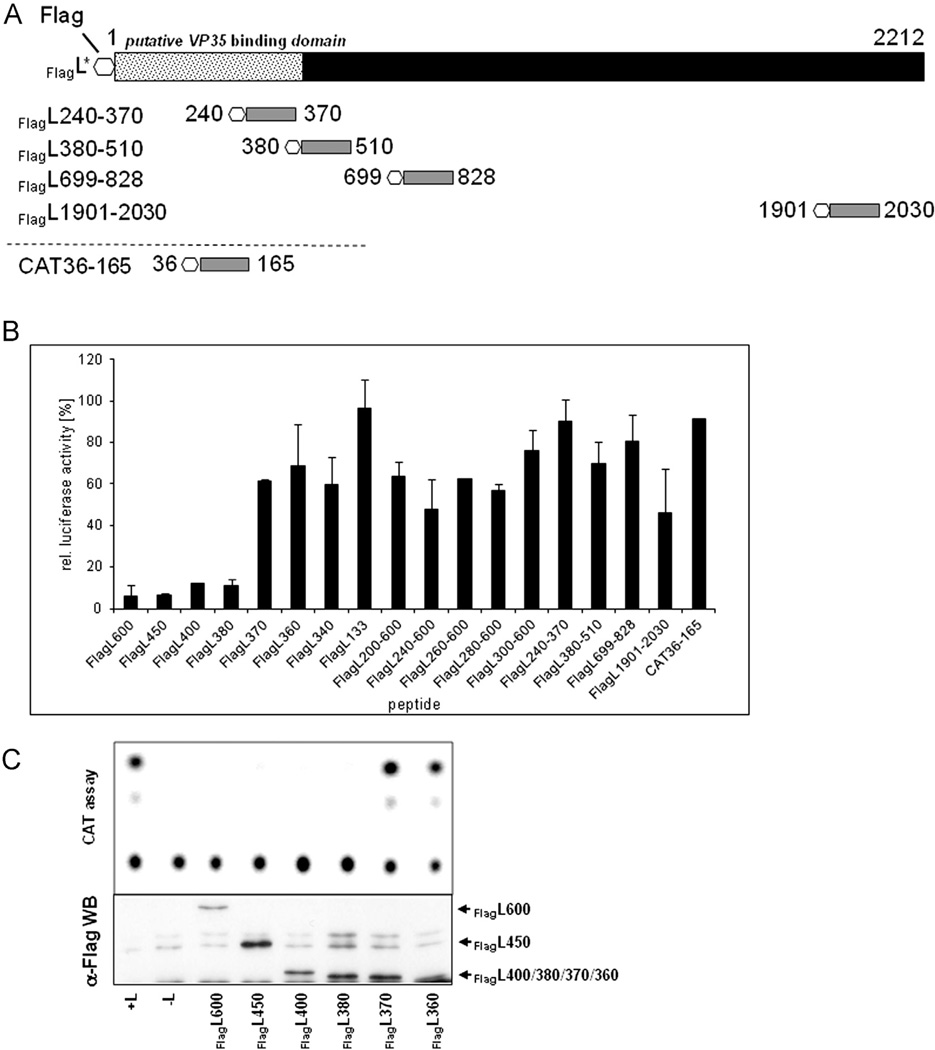Fig. 6.
Inhibition of polymerase activity by expression of L fragments. (A) Schematic of peptides used for polymerase inhibition studies in addition to L deletion mutants described in Fig. 2. (B) Dual luciferase assay results. BSR-T7/5 cells were transfected with plasmids encoding L, NP, VP35, and VP30 to enable transcription and replication of the firefly luciferase-expressing minigenome 3E–5E_F-luc. Additionally, 0.5 µg of the L deletion mutant was transfected to evaluate the impact on polymerase function as indicated by firefly luciferase activity. As transfection efficiency control 0.3 µg of a renilla luciferase-expressing plasmid was co-transfected. Cells were lysed after 24 h and renilla and firefly luciferase activity were measured. Results were normalized to the levels of renilla luciferase and graphed as relative expression setting the sample without additional L fragment as 100%. The average values of 3 independent experiments are shown with standard deviation as error bars. (C) Representative result using a CAT-expressing minigenome (3E–5E) instead of 3E–5E_F-luc to evaluate inhibition of replication (top). Expression control of L fragments (bottom). Cell lysates used for CAT assay were subjected to Western blot analysis using an anti-Flag antibody.

